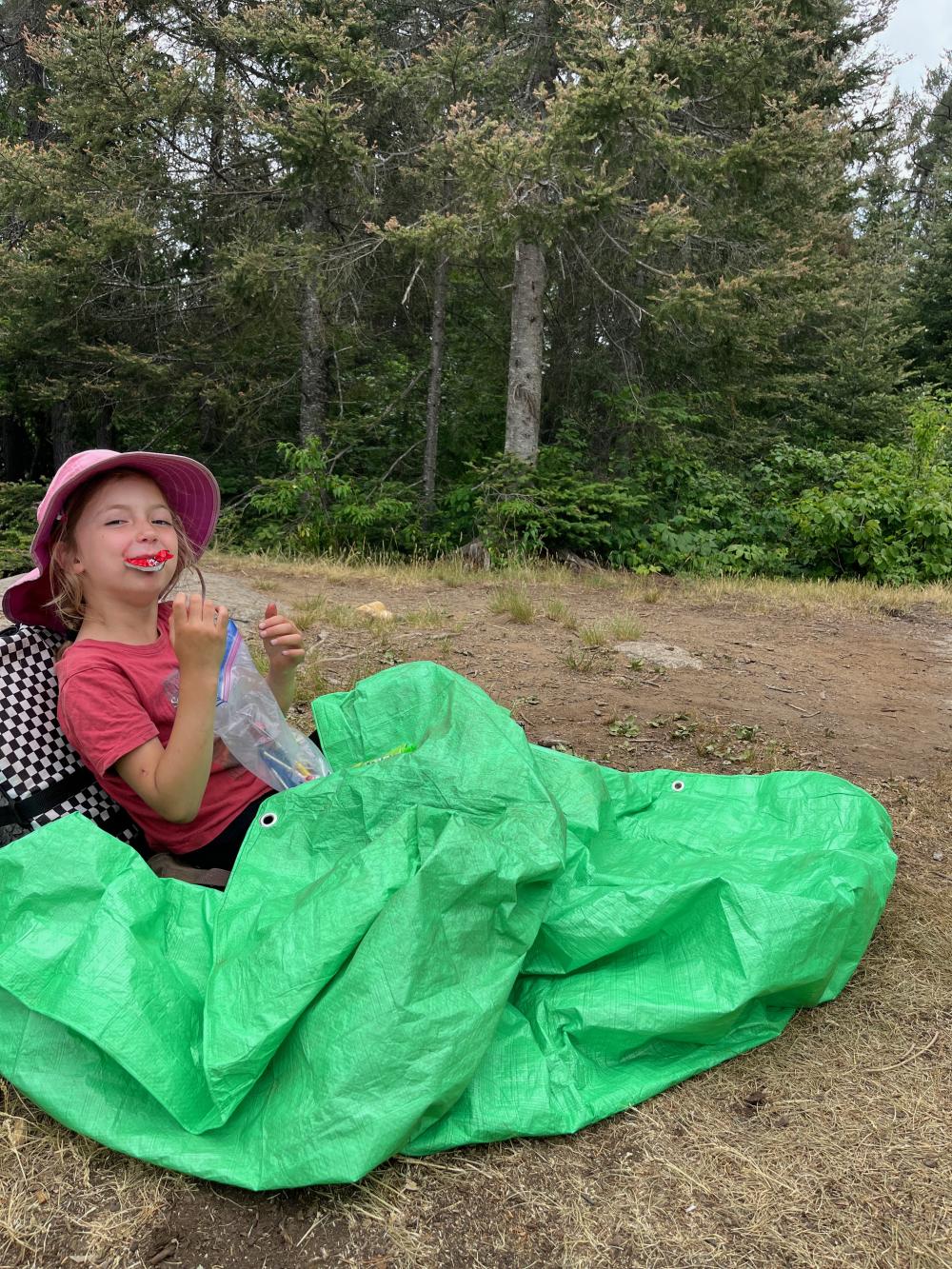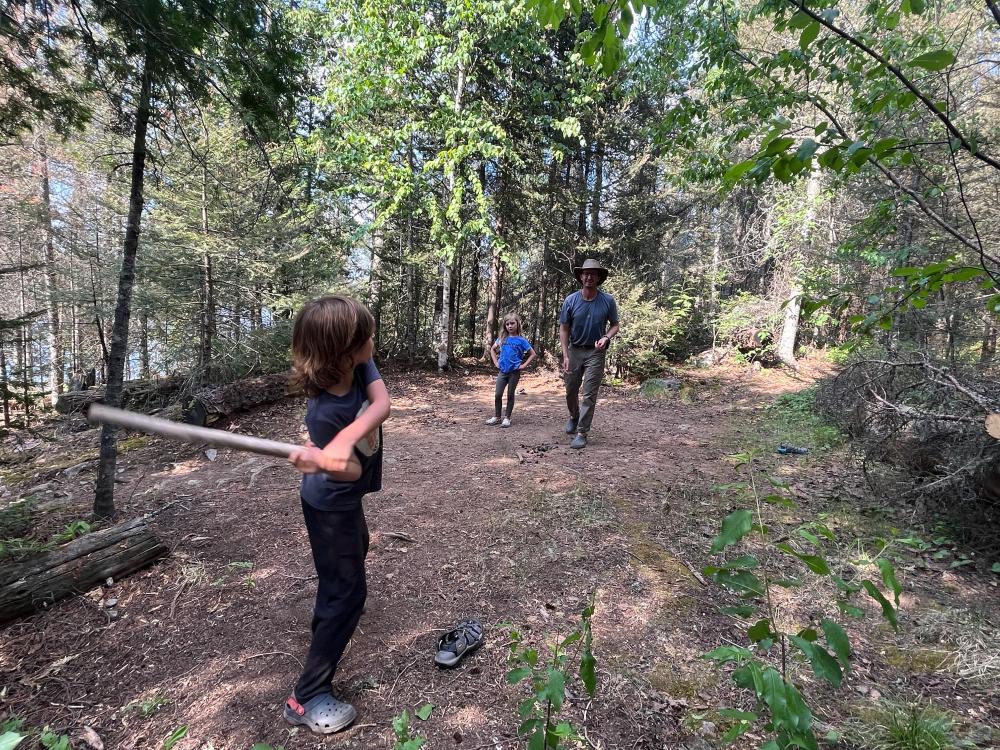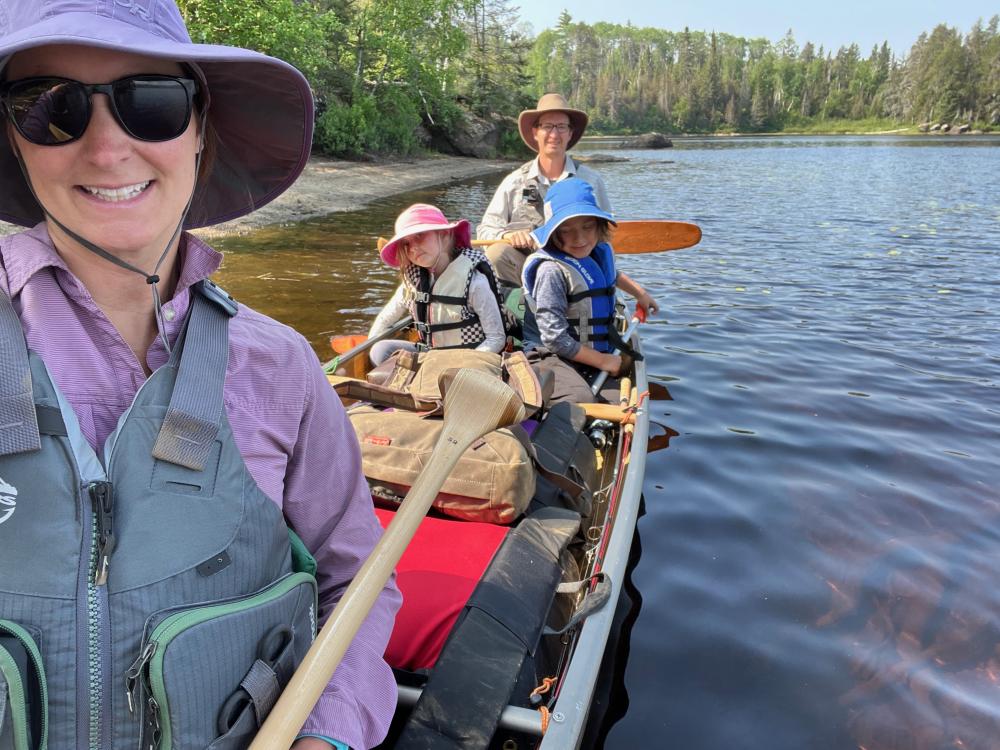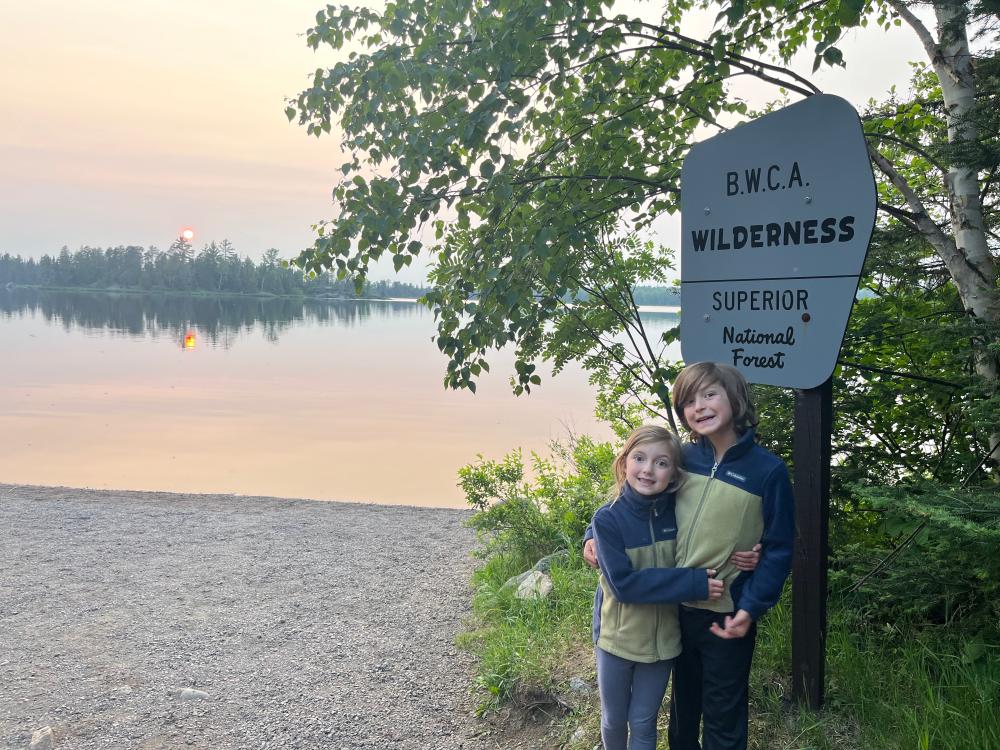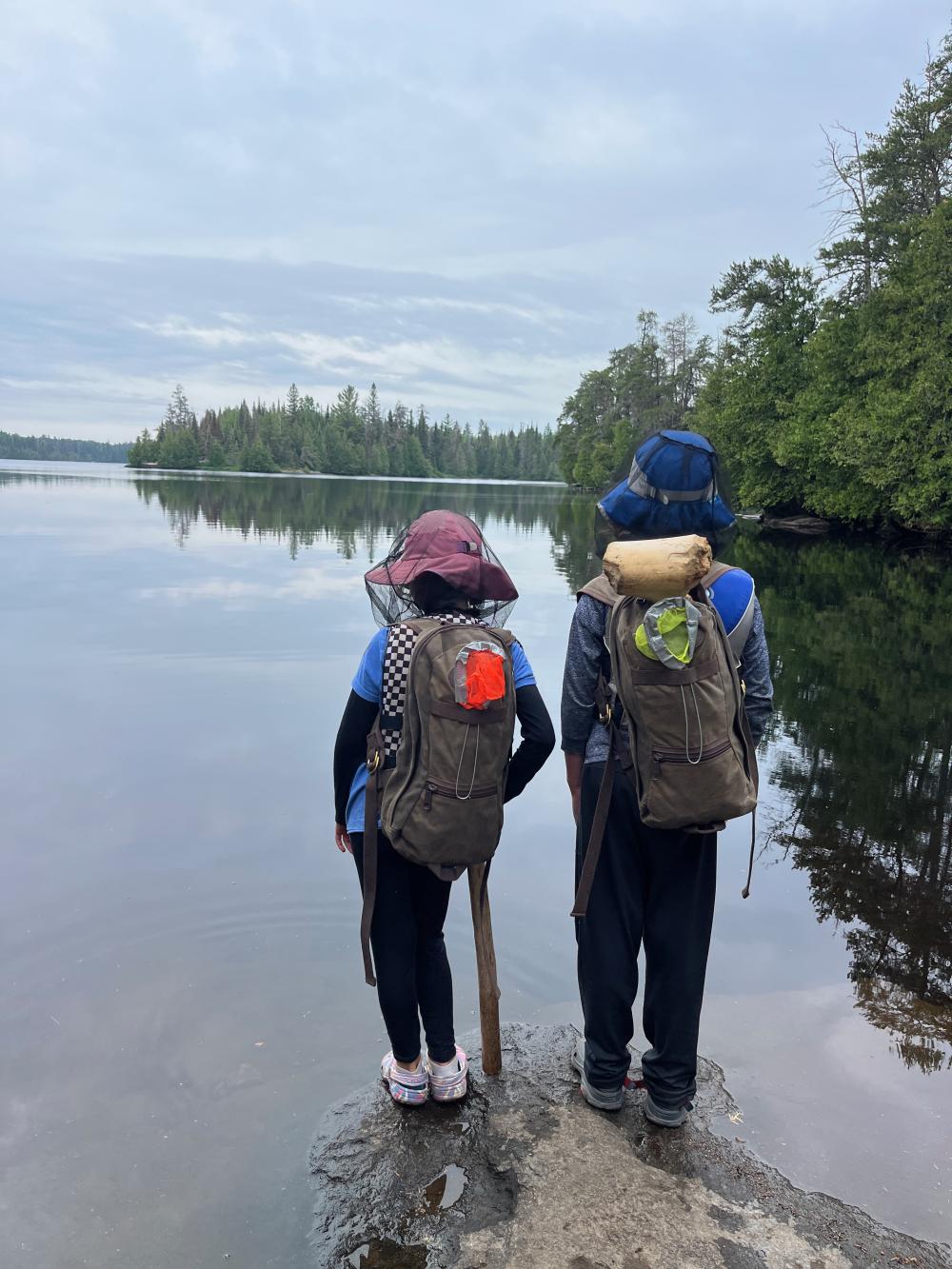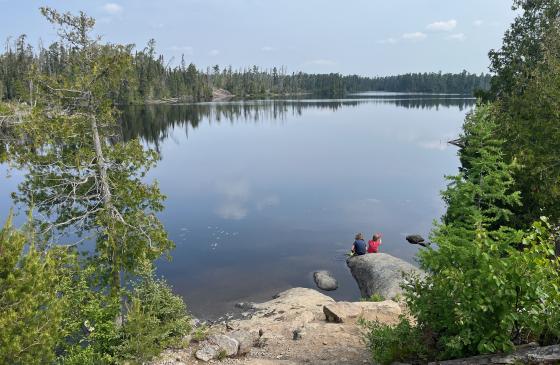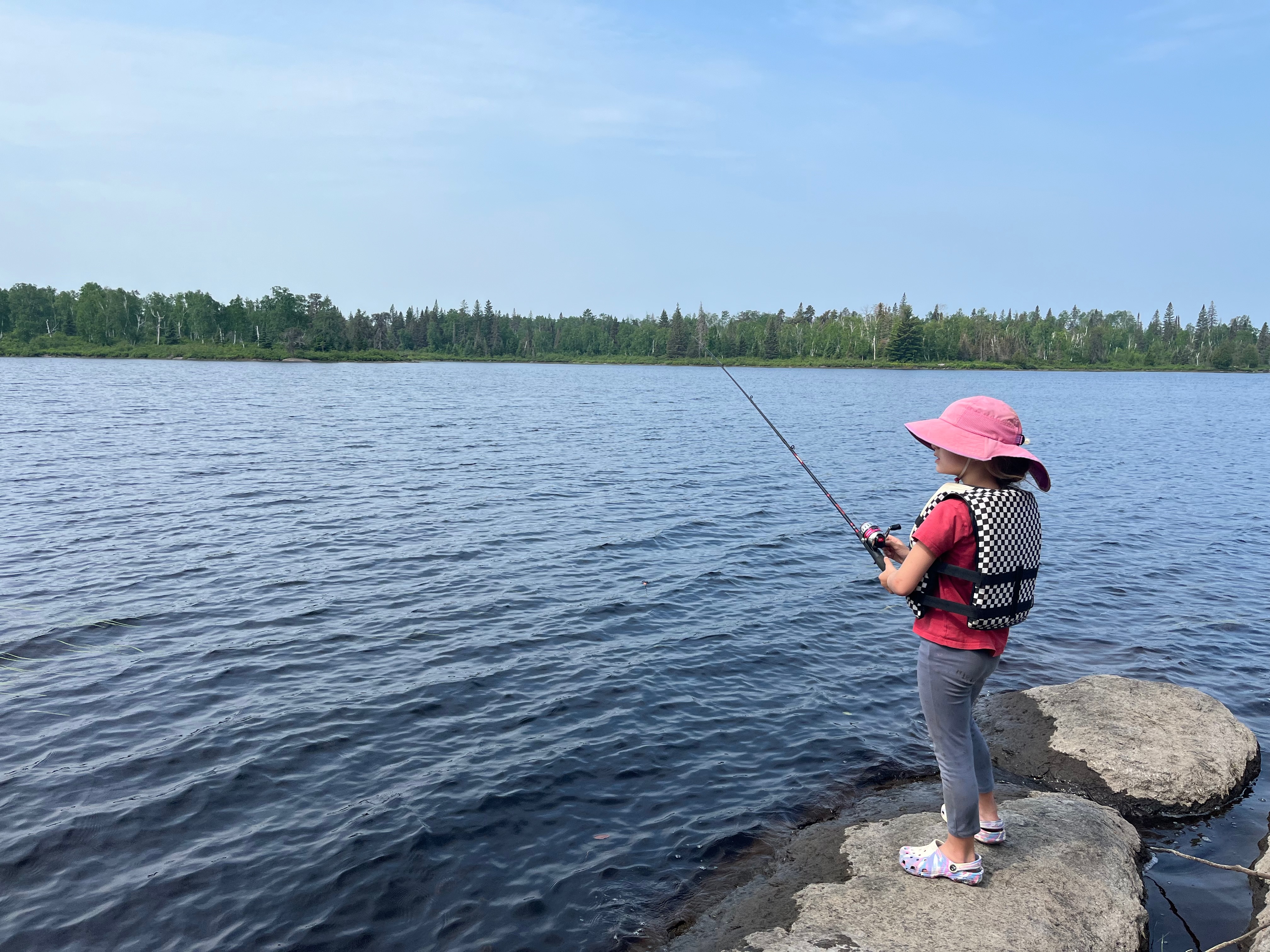
The Boundary Waters Canoe Area Wilderness is the perfect place to teach young kids to love and cherish our wilderness areas. Are we biased? Maybe a little. We have spent our entire lives exploring the nooks and crannies of canoe country, with and without kids.
I did so as a young and rambunctious Boy Scout and was fortunate enough to have excellent mentors along the way. My wife’s family is from Tower, had a place on Lake Vermillion, and took her on trips from a very young age. Our kids, now six and nine, have been coming since the youngest was three.
We’ve all heard it before: the youth are our future. If we are to have a lasting impact in protecting the pristine waters and wilderness mystique of Northern Minnesota, then we need to get more youth involved. We can do so through organizations like the Boy Scouts of America, camps like YMCA Camp Menogyn, or by stepping up and teaching the kids in our life to love and respect this sacred place.
In this article, our goal is to arm you with the basic skills necessary to take that next step and bring your little ones along. What you will learn is that it is not as difficult or stressful as it might seem, as long as you have the right expectations, basic skills, and, most importantly, the right attitude.
Enough about us, let’s dive into some of the tools we use for successful trips with our kids.
-
Set Realistic Expectations:
Kids will change your trip. It is just how it is. If you go into the experience expecting to cover the same amount of ground as you do with adults, you are guaranteed to be disappointed! If you are uncomfortable sitting around at camp untangling fishing lines and wading into the rocks to remove snags, then ditto.
But, if you can set realistic expectations, then I guarantee you are going to have an unforgettable trip!
Our first trip was out of Kawishiwi Lake, Entry Point #37. You can read all about that trip on our blog, From Tent To Takeoff, or in the Summer, 2023 issue of Boundary Waters Journal. It was short, both in terms of time and mileage, but just might have been our best trip ever.
What helped was that we set very basic expectations for how much we would accomplish as paddlers. Our focus was on keeping the kids active, happy, and safe.
That first trip had one goal: for the kids to want to come back. And we succeeded! Every year we take a similar trip from the same entry point. The only difference is that we have expanded it to now be a full nine days and to cover more mileage than we used to as adults!
-
Plan Carefully:
We are guilty of lax planning for many of our adult-only trips. We rarely give it much thought outside of picking an entry point and packing some food. This does not work with kids.
Lay out your maps and plan out a REASONABLE route. Then plan out a shorter back-up route. Look for options ahead of time in case your preferred site is taken or favorite lake is full.
Plan for snacks and meal breaks. Yes, adults can just power through. We can skip meals and still get by. Kids can’t. Skip a meal or snack break and you’re bound to regret it.
If you know you will be portaging around waterfalls or rapids, plan in some time to stop and play. Give the kids something to look forward to. We all work better when motivated by a goal and kids are no different!
-
Pack Extra Food:
Our food barrel for a nine-day trip weights over 60 lbs. Is it a lot? Yes. Do we eat it all? Rarely. But someday we might.
Kids are inherently picky eaters. Some days our kids love mac and cheese. Others you would think we’re feeding them arsenic.
Test your food beforehand and involve them in the process. A couple of years ago we bought literally every bag of freeze-dried food on the market. We ate them while camping. We ate them at home. We tried all of them.
It was an expensive process, but in the end the kids picked out food that they wanted to eat. They settled on three meals from an initial list of over 20. But they eat them, usually without complaining, and are full and ready for each day.
You also need to pack plenty of snacks. Unfortunately, these aren’t freeze dried and weigh a ton, but they will save you in the end. We pack the same snacks they eat at school because we know they like them and often can buy them in bulk at Costco.
-
Plan Simple Meals:
On a similar note, plan simple and quick meals. We have never been the gourmet BWCA type. We like to focus our time and energy on enjoying the wilderness, not cooking. This is especially true with kids.
Meals should be simple and should not take longer than 15 minutes to prepare. Once kids are hungry, it is too late. The clock is ticking and bad things are bound to come. As parents and wilderness mentors, we need to anticipate the ”hangries” and get in front of them. The closest we ever get to true cooking is eggs and bacon on mornings 1 and 2. After that, it’s PB&Js and freeze-dried meals.
For dessert, we bring a bag of candy. We’ve had too many instances of kids thinking they’ll love a freeze-dried dessert, only to change their minds later. Gum, suckers, and s’mores are our staples.
Speaking of s’mores, leave the graham crackers at home. We bring Oreo cookies and marshmallows. The Oreos rarely break into tiny pieces in transit, and there is no chocolate to melt all over the food barrel. They are quick, easy, and close enough to the real thing!
-
Pack Intentionally:
We’re not talking minimalism here. Remember, there are kids in that canoe! What we are talking about is only bringing gear that serves a purpose. Think of it as the middle ground between packing for a Superior Hiking Trail through-hike and car camping at Tettegouche.
For long trips, we pack one large food barrel that includes food, our Jetboil, and bowls/cups/etc,. Then we pack two Cooke Custom Sewing Pioneer (medium) packs with everything else. We use compression sacks to help save space and try to think through each piece of gear.
We do not bring hammocks, bug tents, coolers, chairs (apart from our canoe seats), or anything else that is not a necessity. If you start your kids off with the basics, then that is all they’ll know and they’ll build the skills to survive, and thrive, with just that.
If you are looking for more specifics on exactly what we pack, feel free to send us an email or message us on social media. We’d be happy to share our list.
-
Try to Single Portage
I know this sounds crazy, but do your best to pack in a way that allows for single portaging. It will mean you leave more at home and that you have some rough hikes, but it is well worth it.
We have found that if we double portage, the kids get restless after a while and either follow us around complaining or get eaten alive by mosquitos as they pout at the water's edge.
Single portaging keeps up the pace and provides a good balance of paddle time to hiking time. Too much of either is not good!
Also, along the same lines, we plan our trips with alternating work/rest days. We’ll work really hard on day 1, then stay at the same site and hang out on day 2. Work hard on day 3, then rest on day 4. Rinse and repeat.
We find that we can push the kids further on the work days and get deeper into the wilderness. Then they are so wiped that behavior on the rest of the days is awesome and we’re able to enjoy good amounts of fishing, swimming, and general kid-friendly fun and games.
-
Prioritize Safety
No, you should not prioritize safety any more when canoe tripping with kids. It should always be top of mind when you are away from civilization. That being said, there are a couple of things we do differently with kids.
First, we do not bring an ax or hatchet on our trips. The four of us sat in on a backcountry blade safety course put on by Jason Gustafson of Lester River Bushcraft a couple of years ago at the annual Winter Camping Symposium. The class was a fountain of knowledge, but the main takeaway was that they are not worth the risk, especially hatchets.
The likelihood of injury is infinitely greater due to the arch of the swing and the possibility that the blade is deflected… into your shins or feet. We bring a folding saw and a large knife.
Most BWCA wood is less than wrist size and does not need to be split. If needed, Jason taught us safe ways to split wood with a sharp knife and a stick. Frankly speaking we’ve never had to use it. Plus, it saves on weight.
We also bring a Personal Locator Beacon and a weather radio. We know a lot of folks love their Garmin Inreach Satellite Communicators and the next paragraph is going to stir up some controversy.
We see the value, but really do not want to be connected to the outside world on our trips. It is one of the main reasons we go. We also have a no-gadgets rule when we camp, which we feel we need to respect if we are going to impose it on the kids.
The Personal Locator Beacon can get us help when needed and is a good reminder to us that we need basic backcountry first aid knowledge for injuries that might not require a liftout.
We check in daily with our weather radio so we understand what could be coming our way. The information we receive on our daily check-ins often informs which campsites we choose and where we put up our tent. The added vigilance has kept us safe on more than one occasion.
-
Know When to Call it Off
Sometimes it is time to pack up your toys and go home. Maybe someone is sick or something just doesn’t feel right. Sometimes you are on your last night and severe weather is coming through the area. Whatever the reason, it is OK if your trip doesn't end up being as long as you had planned.
Twice we have cut a day off of our trips due to inclement weather. Our number one goal is to make sure the kids are excited to come back next year. If that means bailing a day early and swimming at the AmericInn, then so be it.
The last thing you want to do is force them through a situation that they are not physically or emotionally ready for. Ease into your adventures so you can build the right level of skill and resilience in those little minds.
Eventually, you will be stuck in a difficult situation that you cannot escape. Hopefully by then you will have built the skills to get through it safely, and as a family.
-
Teach your kids proper etiquette, both on and off the water
We’ve all seen groups come through breaking the unwritten rules of canoe country exploration. They crowd around at portages, leave garbage at campsites, or scream and holler until the early hours of the morning.
Don’t be them. And please don’t create new ones! Walk through what the trip is going to look like over dinner prior to leaving. Explain what a portage is and what it will look like. Set expectations for proper behavior, voice levels, etc.
Help them to understand why it is important to spread out at portages and why they should move gear to the side so it is out of the way. Explain that the canoe carrier has right-of-way and why they may be gritting it out and not paying very close attention to little feet in their path.
Teach them the basics of leave-no-trace ethics. One of the best lessons I ever learned in the Boy Scouts was how to properly clean a campsite. We would walk arm-in-arm through the site to pick up every last piece of man-made waste. Then the leader would check our work.
We continue this same practice with our kids, with a reward for a clean site, and a punishment of additional work for laziness.
One recurring topic in our family is volume levels. It is easy to forget how loud kids can be! Just because we are outdoors and deep in the backcountry does not mean we can completely let loose. Sound carries across lakes and screaming, at least in our opinion, should be avoided.
-
Maintain a Positive Attitude
Most importantly, try to maintain a positive attitude. None of us are perfect and I’m sure there will be times when the kids test your limits. But if we can’t maintain a healthy attitude, then how can we expect them to?
Have we ever become angry or frustrated on our trips? Of course! Have we yelled at the kids in our pristine wilderness area? Maybe…
Underlying all of the emotion we try our best to maintain a positive attitude. It isn’t always easy, but it tends to lead to a better wilderness experience. Plus, it is a life skill the world could use a lot more of. Why not be leaders and teach it to our kids?
Conclusion
We are all fortunate to be able to visit such a wonderful area. This land has been cared for for centuries by the Anishinaabe people and the fight to protect it in the modern age has been long and contentious.
It is hard to believe but the first concrete actions taken by the non-indigenous inhabitants was in 1902 when 500,000 acres were withdrawn from future settlement. Fast forward to today and sulfide-ore copper mining is once again threatening this beautiful area.
While we all cannot be on the frontlines fighting the good fight, we can all make a difference by being careful stewards of the land and teaching our kids, grandkids, and other youth to be good stewards too.
A trip to the Boundary Waters Canoe Area Wilderness can be a life-changing experience. It was for me and likely was for many of you. Please, do us all a favor and create that unique experience for the little people in your life that you care for. It is in all of our best interest!
